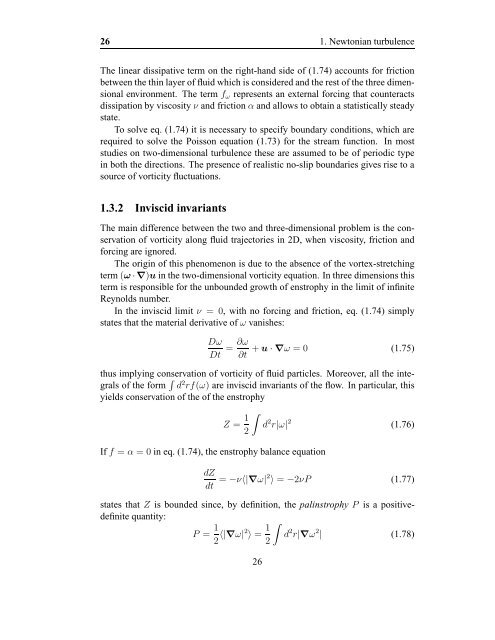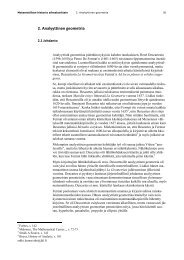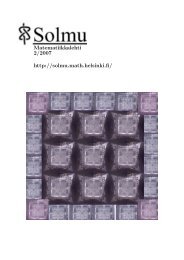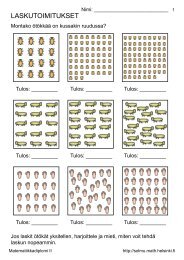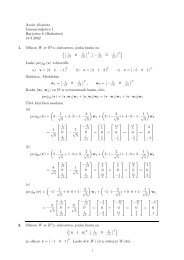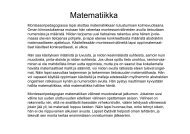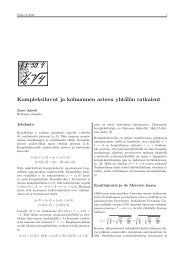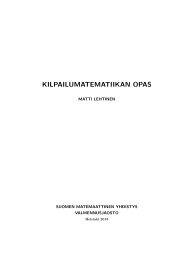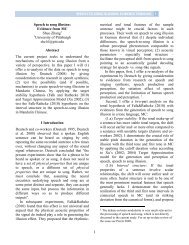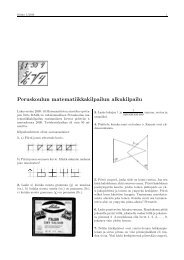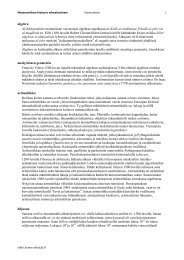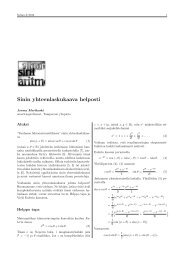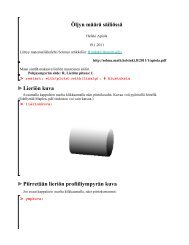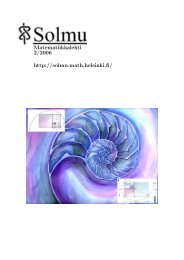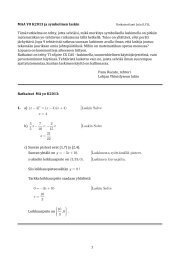Non-Newtonian turbulence: viscoelastic fluids and binary mixtures.
Non-Newtonian turbulence: viscoelastic fluids and binary mixtures.
Non-Newtonian turbulence: viscoelastic fluids and binary mixtures.
You also want an ePaper? Increase the reach of your titles
YUMPU automatically turns print PDFs into web optimized ePapers that Google loves.
26 1. <strong>Newtonian</strong> <strong>turbulence</strong><br />
The linear dissipative term on the right-h<strong>and</strong> side of (1.74) accounts for friction<br />
between the thin layer of fluid which is considered <strong>and</strong> the rest of the three dimensional<br />
environment. The term fω represents an external forcing that counteracts<br />
dissipation by viscosity ν <strong>and</strong> friction α <strong>and</strong> allows to obtain a statistically steady<br />
state.<br />
To solve eq. (1.74) it is necessary to specify boundary conditions, which are<br />
required to solve the Poisson equation (1.73) for the stream function. In most<br />
studies on two-dimensional <strong>turbulence</strong> these are assumed to be of periodic type<br />
in both the directions. The presence of realistic no-slip boundaries gives rise to a<br />
source of vorticity fluctuations.<br />
1.3.2 Inviscid invariants<br />
The main difference between the two <strong>and</strong> three-dimensional problem is the conservation<br />
of vorticity along fluid trajectories in 2D, when viscosity, friction <strong>and</strong><br />
forcing are ignored.<br />
The origin of this phenomenon is due to the absence of the vortex-stretching<br />
term (ω ·∇)u in the two-dimensional vorticity equation. In three dimensions this<br />
term is responsible for the unbounded growth of enstrophy in the limit of infinite<br />
Reynolds number.<br />
In the inviscid limit ν = 0, with no forcing <strong>and</strong> friction, eq. (1.74) simply<br />
states that the material derivative of ω vanishes:<br />
Dω<br />
Dt<br />
= ∂ω<br />
∂t<br />
+ u · ∇ω = 0 (1.75)<br />
thus implying conservation of vorticity of fluid particles. Moreover, all the integrals<br />
of the form � d 2 rf(ω) are inviscid invariants of the flow. In particular, this<br />
yields conservation of the of the enstrophy<br />
Z = 1<br />
�<br />
2<br />
d 2 r|ω| 2<br />
If f = α = 0 in eq. (1.74), the enstrophy balance equation<br />
(1.76)<br />
dZ<br />
dt = −ν〈|∇ω|2 〉 = −2νP (1.77)<br />
states that Z is bounded since, by definition, the palinstrophy P is a positivedefinite<br />
quantity:<br />
P = 1<br />
2 〈|∇ω|2 〉 = 1<br />
�<br />
d<br />
2<br />
2 r|∇ω 2 | (1.78)<br />
26


